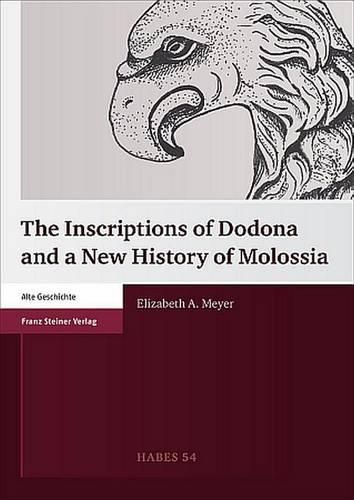Readings Newsletter
Become a Readings Member to make your shopping experience even easier.
Sign in or sign up for free!
You’re not far away from qualifying for FREE standard shipping within Australia
You’ve qualified for FREE standard shipping within Australia
The cart is loading…






Molossia is perhaps most famous as the kingdom of the third-century warlord Pyrrhus. The Inscriptions of Dodona and A New History of Molossia re-examines the non-oracular stone and bronze inscriptions, re-dating some of the most important to the third century BC rather than the fourth. This re-dating in turn forms the basis of the new history presented here. In this history are stressed the primacy of the king, who ruled a kingdom rather than a federal league; the minimal extent of Molossian expansion in the fourth century BC; the likelihood that there was indeed no federal league, only a type of amphictyony administering the sanctuary of Dodona, before 232 BC; the continuing relationship of allied association rather than incorporation between the Molossians with their neighbors; the interference of the Macedonians as a catalyst for the coalescence of Molossian identity; and the way events of the third century paved the way for the establishment of a federal league after the death of the last monarch in 232 BC. This history substantially reshapes our understanding of this part of the Hellenistic world, and of the early history of federal leagues in Greece.
$9.00 standard shipping within Australia
FREE standard shipping within Australia for orders over $100.00
Express & International shipping calculated at checkout
Molossia is perhaps most famous as the kingdom of the third-century warlord Pyrrhus. The Inscriptions of Dodona and A New History of Molossia re-examines the non-oracular stone and bronze inscriptions, re-dating some of the most important to the third century BC rather than the fourth. This re-dating in turn forms the basis of the new history presented here. In this history are stressed the primacy of the king, who ruled a kingdom rather than a federal league; the minimal extent of Molossian expansion in the fourth century BC; the likelihood that there was indeed no federal league, only a type of amphictyony administering the sanctuary of Dodona, before 232 BC; the continuing relationship of allied association rather than incorporation between the Molossians with their neighbors; the interference of the Macedonians as a catalyst for the coalescence of Molossian identity; and the way events of the third century paved the way for the establishment of a federal league after the death of the last monarch in 232 BC. This history substantially reshapes our understanding of this part of the Hellenistic world, and of the early history of federal leagues in Greece.